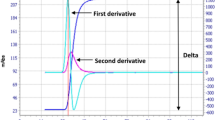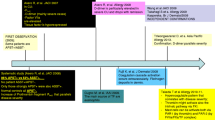Abstract
About 20% of world population suffer from acute urticaria at some stage in their lives. Recent studies showed coagulation dysfunction in chronic urticaria. The involvement of coagulation changes in acute urticaria remains unclear. Fifty-eight acute urticaria patients were enrolled in this study and divided into two groups (referred to throughout as infection-related and infection-unrelated acute urticaria). The routine laboratory parameters including coagulation tests between the two groups were compared. The correlation between coagulation tests and CRP at acute phase was also assessed. Dynamic change of routine coagulation test results at acute phase and resolving phase was compared. The potential performance of coagulation for infection indication was tested. We found d-dimer, fibrin degradation product (FDP), and fibrinogen (Fg) increased in the acute phase of infection-related acute urticaria patients. d-dimer, FDP, Fg, and APTT are positively correlated with CRP in the acute phase. d-dimer and FDP decreased in the resolving phase of infection-related acute urticaria patients. Higher d-dimer (> 0.48 mg/L) and FDP (> 3.84 mg/L) may indicate infection-related acute urticaria. In conclusion, in acute urticaria with low venous thromboembolism risk, d-dimer level and dynamic change can be potentially used for the infection-related clinical practice management.



Similar content being viewed by others
References
Zuberbier T, Aberer W, Asero R, Abdul Latiff AH, Baker D, Ballmer-Weber B et al (2018) The EAACI/GA2LEN/EDF/WAO guideline for the definition, classification, diagnosis and management of urticaria. Allergy 73:1393–1414
Peck G, Hashim MJ, Shaughnessy C, Muddasani S, Elsayed NA, Fleischer AB Jr (2021) Global epidemiology of urticaria: increasing burden among children, females and low-income regions. Acta Derm Venereol 101:adv00433
Cugno M, Asero R, Tedeschi A, Lazzari R, Marzano AV (2012) Inflammation and coagulation in urticaria and angioedema. Curr Vasc Pharmacol 10:653–658
Sakurai M, Oba M, Matsumoto K, Tokura Y, Furukawa F, Takigawa M (2000) Acute infectious urticaria: clinical and laboratory analysis in nineteen patients. J Dermatol 27:87–93
Takahashi T, Minami S, Teramura K, Tanaka T, Fujimoto N (2018) Four cases of acute infectious urticaria showing significant elevation of plasma D-dimer level. J Dermatol 45:1013–1016
Hagiwara S, Oshima K, Aoki M, Murata M, Ishihara K, Kaneko M et al (2013) Usefulness of fibrin degradation products and d-dimer levels as biomarkers that reflect the severity of trauma. J Trauma Acute Care 74:1275–1278
Ghazanfar MN, Thomsen SF (2018) D-dimer as a potential blood biomarker for disease activity and treatment response in chronic urticaria: a focused review. Eur J Dermatol 28:731–735
Kinasewitz GT, Yan SB, Basson B, Comp P, Russell JA, Cariou A et al (2004) Universal changes in biomarkers of coagulation and inflammation occur in patients with severe sepsis, regardless of causative micro-organism [ISRCTN74215569]. Crit Care 8:R82-90
Tripodi A (2011) D-dimer testing in laboratory practice. Clin Chem 57:1256–1262
Dumoulin EN, Fiers L, Devreese KMJ (2016) Investigation of sensitivity for coagulation factor deficiency in APTT and PT: how to perform it? Clin Chem Lab Med 54:e169–e172
Nakae R, Murai Y, Yokobori S (2022) Biomarkers in neurological injury: fibrinogen, fibrinogen/fibrin degradation products (FDPs), and D-dimer. In: Biomarkers in trauma, injury and critical care. Springer, pp 1–15
Kasperska-Zajac A, Brzoza Z (2009) Increased D-dimer concentration in plasma of patients with severe acute urticaria. Br J Dermatol 161:1409–1410
Takahagi S, Mihara S, Iwamoto K, Morioke S, Okabe T, Kameyoshi Y et al (2010) Coagulation/fibrinolysis and inflammation markers are associated with disease activity in patients with chronic urticaria. Allergy 65:649–656
Schaefer P (2017) Acute and chronic urticaria: evaluation and treatment. Am Fam Physician 95:717–724
Funding
National Natural Science Foundation of China (82102416, 82202635), Young Science and Technology Project (2022KJXX-26). Shaanxi Provincial People’s Hospital 2021 Jingying Project (2021JY-01).
Author information
Authors and Affiliations
Contributions
LZ and XY wrote the main manuscript text and designed this study. WJ and YBG performed the data collection. WJ prepared figure1 and table 1. YBG prepared figures 2-3 and table 2. All authors reviewed the manuscript.
Corresponding author
Ethics declarations
Conflict of interest
The authors have no conflicts of interest to declare.
Additional information
Publisher's Note
Springer Nature remains neutral with regard to jurisdictional claims in published maps and institutional affiliations.
Rights and permissions
Springer Nature or its licensor (e.g. a society or other partner) holds exclusive rights to this article under a publishing agreement with the author(s) or other rightsholder(s); author self-archiving of the accepted manuscript version of this article is solely governed by the terms of such publishing agreement and applicable law.
About this article
Cite this article
Zhang, L., Jiang, W., Gebreab, Y.B. et al. Increased d-dimer and fibrin degradation product levels as potential indicators for evaluating infection-related acute urticaria: a case-case–control study. Arch Dermatol Res 315, 2871–2876 (2023). https://doi.org/10.1007/s00403-023-02706-2
Received:
Revised:
Accepted:
Published:
Issue Date:
DOI: https://doi.org/10.1007/s00403-023-02706-2




